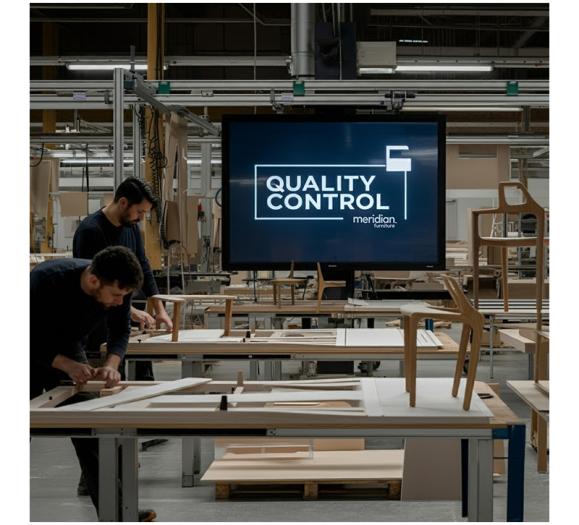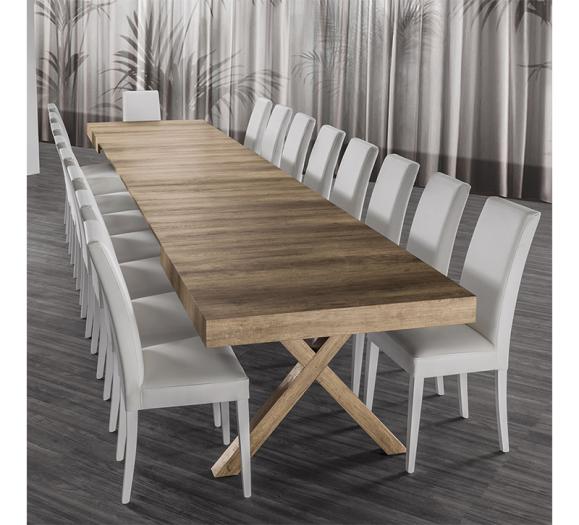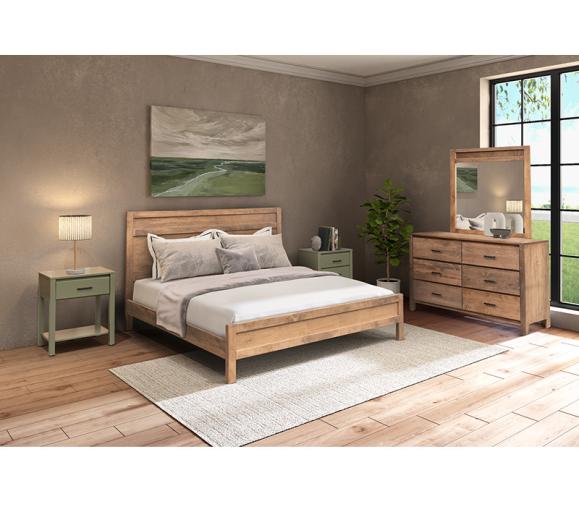If you braved the rain at April's High Point Market and left the IHFC for the Cisco Brothers warehouse on Mill Avenue, then you probably couldn't help but notice the massive printer in the back corner on the second floor. Or maybe you didn't.
Quietly churning in the background, the 3-D printer moved up and down back and forth all market long as it printed end tables, chairs and tabletop pieces. It's a true sign that the furniture industry is changing, and Print the Future, the start-up behind this printer, is ready to take on the challenge.
Launched just this year, Print the Future delivers an industry disruption. With its team of industrial designers and 3-D printers, the start-up guides consumers as they take an idea, turn it into a piece of furniture and print it. The process can be done either in store or online, and the products created are 100 percent recyclable.
Check out how this futuristic company is changing the way we think about furniture manufacturing.
How It Works
Imagine this: You're designing a living room. Every piece of furniture is ready to go — except the coffee table. You just can't find a design that fits the dimensions and the aesthetic. What's an interior designer to do?
Enter Print the Future, the company with the 3-D printer available for large- and small-scale furniture manufacturing. When the company opens its showroom (a flagship Manhattan store is in the works), consumers and interior designers will be able to design their own furniture and print it in the store.
The showroom will be staffed with industrial designers ready to help everyone from knowledgable trade to people off the street. Customers will be assigned a designer, who will help with the production from start to finish. If a customer has a design in mind, the designer will work with the customer to create a printable file that the computer can read and ensure that the final product will be safe and sturdy. Having an idea, though, is not necessary. Print the Future will have a whole catalog of previously printed designs. Consumers can browse the designs and choose one they like best.
Once a design has been created or chosen from the catalog, the design is sliced.
"When you slice a file," Print the Future team member Amy Kittel says, "you're creating the layers for the printer to be able to read it. So as it's printing it, it knows how much material and where for each layer to be able to build out your entire piece."
From there, it's just a matter of time, and a lot of factors determine how fast a piece can be printed. Simple, small designs go much quicker, while larger and more intricate designs will take longer. Not all printers run at the same speed, so even smaller pieces can be slowed down by a printer. The chairs on display at Print the Future's High Point location took 14 hours to print. For much more in-depth and customized pieces, Kittel estimates the project will take eight to 12 weeks.
Kittel says this whole process is still in the works, but the company is working with interior designers to better map out the design and printing process.
The 3-D printer model isn't just for end tables and tabletop decor pieces. While at High Point, those that made it to Mill Avenue could lounge on one of the printer's comfortable benches and kick back in one of their armchairs. The plastic material looks like thin cable, and the chair itself is hollow. When standing you might think you'd break the chair if you tried to sit it or that you'd be sore after sitting in it for more than five minutes, but the chairs are surprisingly sturdy and comfortable. Other printers not at High Point can print products with certain clays and ceramics, so consumers are not limited to plastic chairs.
When it comes to how large these printers can go, the sky really is the limit. In addition to tables, chairs and couches, 3-D printers can also print whole houses, something founder Neil Patel is particularly keen on doing. He envisions printing whole homes for people in developing countries.
Manufacturing Disruptor
With anything as futuristic as 3-D printing, many would assume that such a product would be far out of the average person's price point, but Print the Future is offering several options.
The company is planning to launch a membership service that will give members access to educational content, networking events and of course 3-D printing. For those members, printing will cost less per hour. Though the price points haven't been finalized, Kittel says that price point for members will probably fall at about $20, while non-members will pay $40 per hour.
Even at those price points, Print the Future is making one-off printing feasible. Manufacturers often shy away from doing small manufacturing orders because it's not cost-effective for either the manufacturer or the buyer. With a 3-D printer, costs stay down, and consumers can create one-off products all their own.
Of course, 3-D printing is still in its early stages, and it may take a while for it to spread from large cities to small towns, but one thing's for sure: This type of manufacturing isn't going away and it's getting better.







